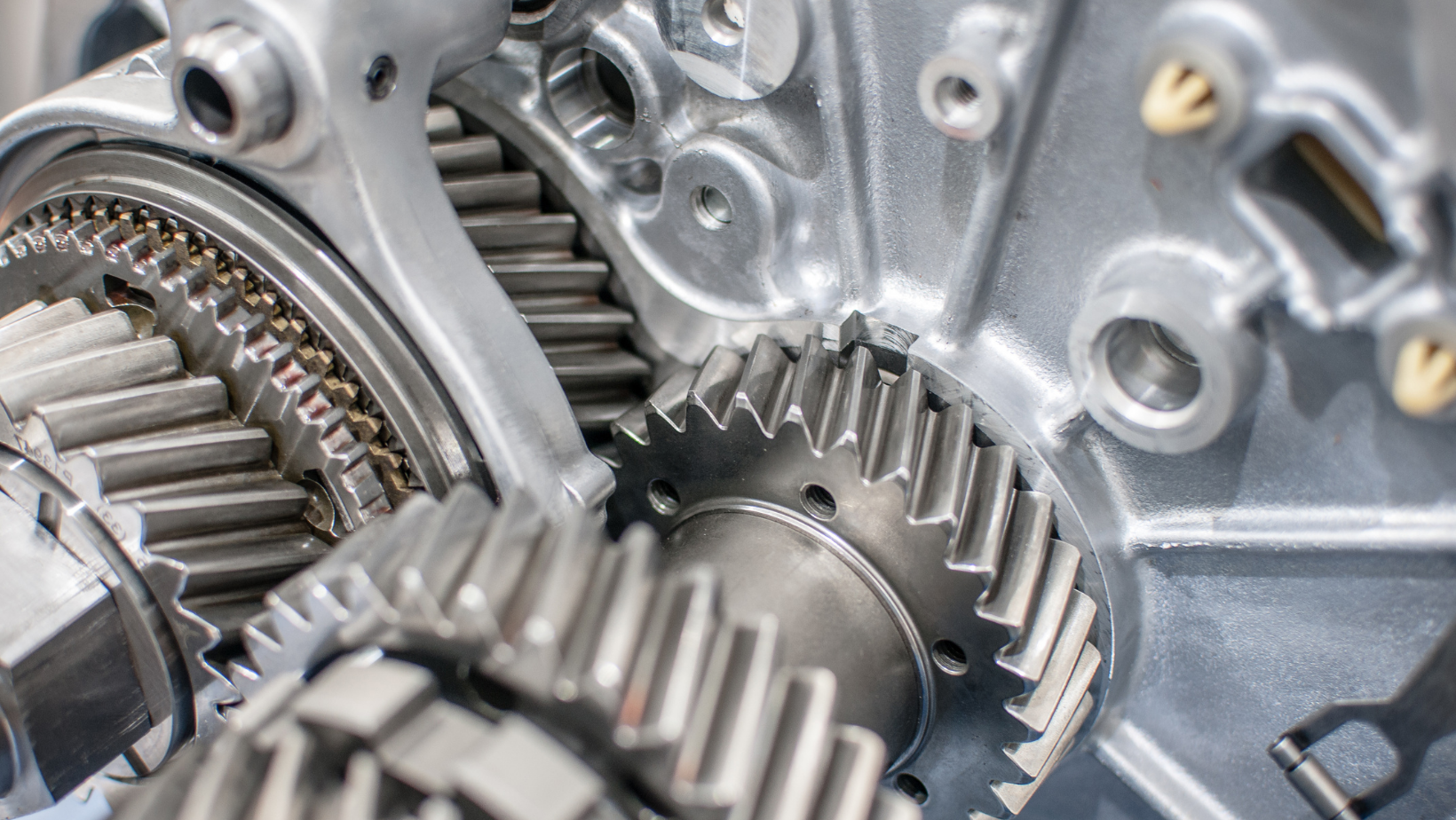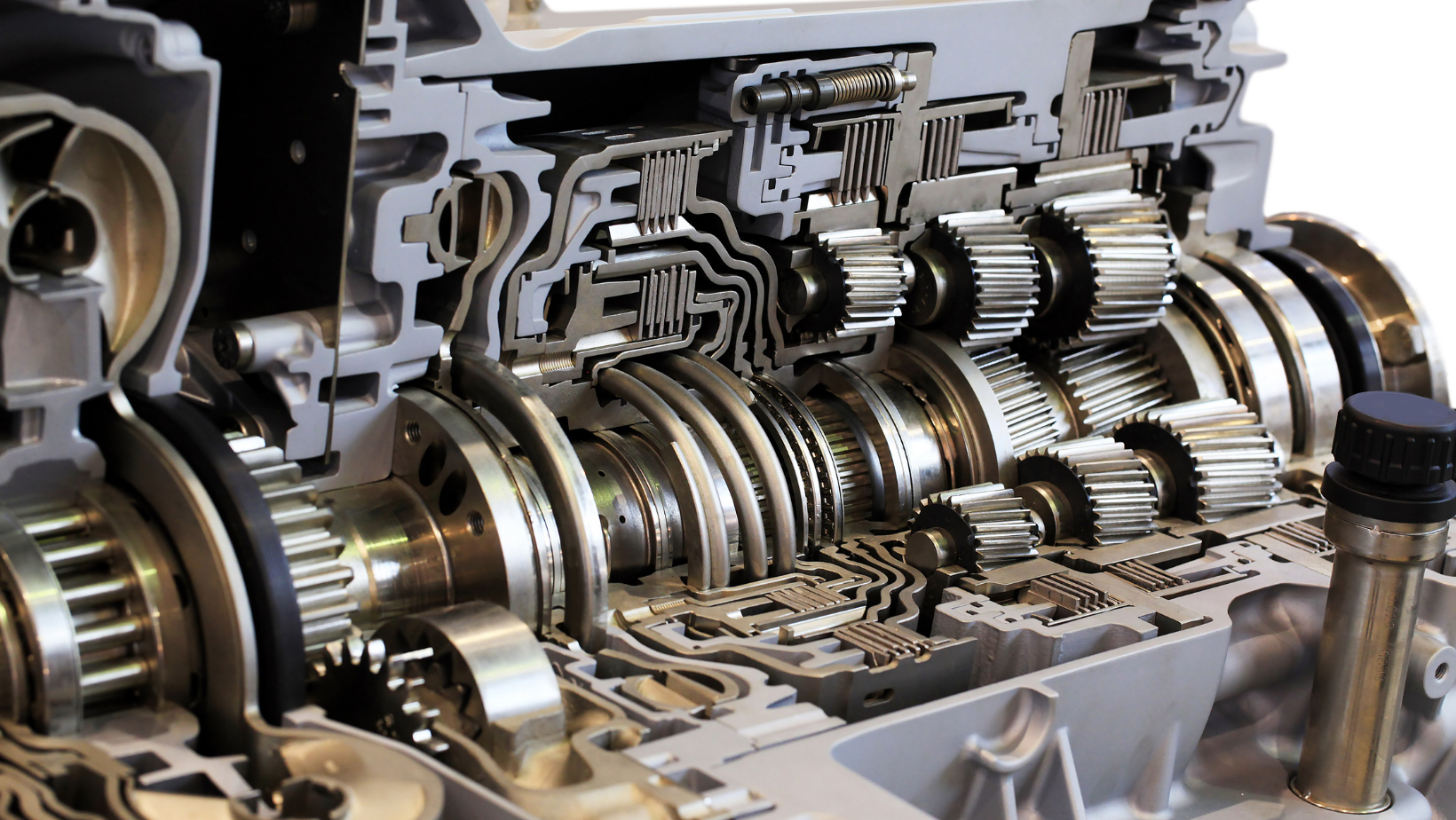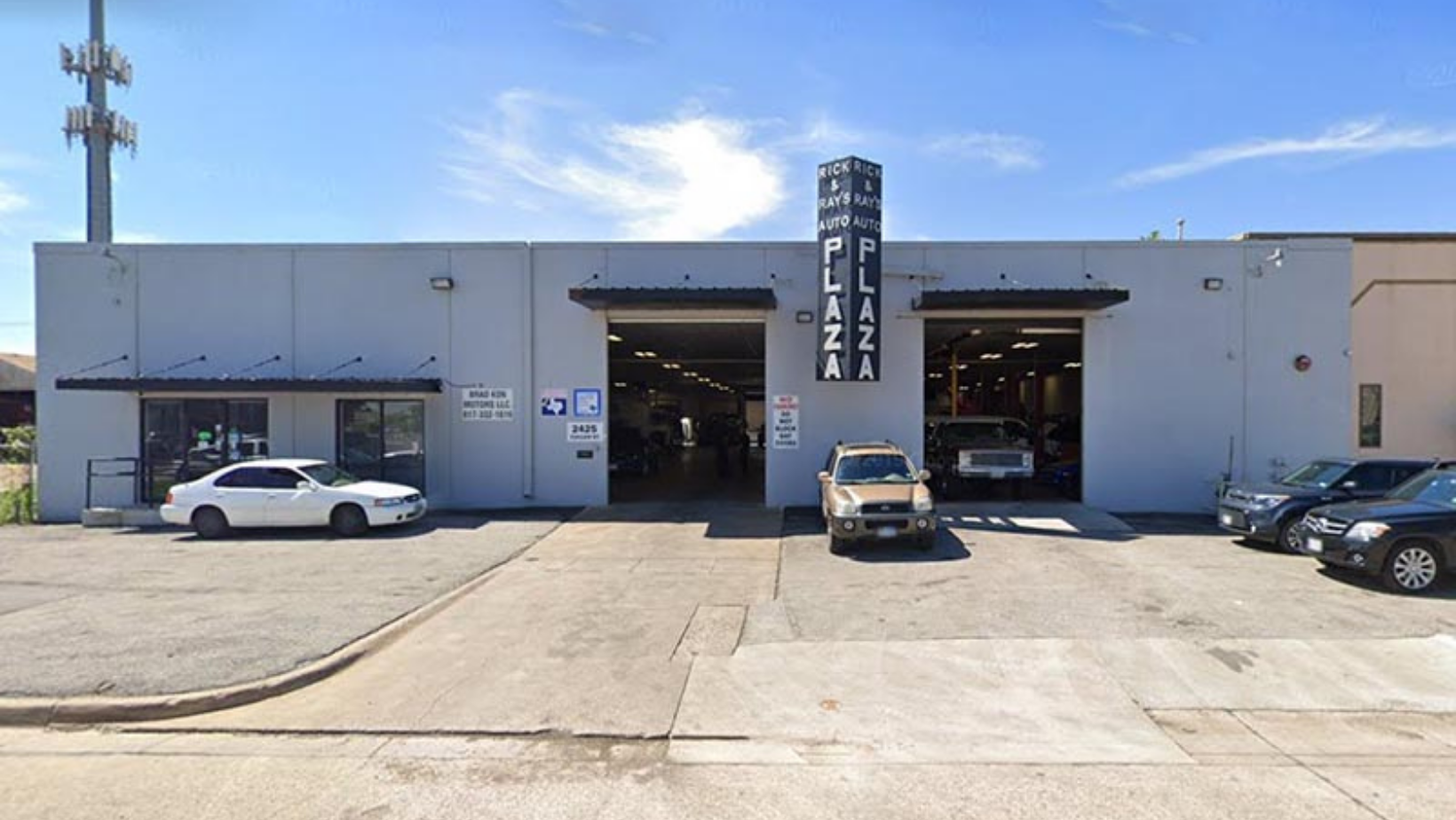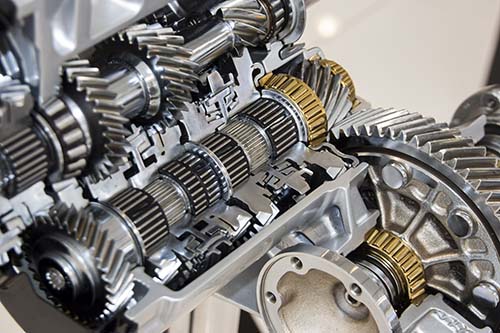Do you need Volvo transmission repair? Contact Rick & Ray’s Auto Plaza!
Ideally, your Volvo’s transmission would last the entire lifespan of your vehicle. That isn’t always the case, though. Unfortunately, sometimes you need transmission repair before you’re ready to retire the car. It’s important to address transmission issues quickly before they worsen or get more expensive.

A well-oiled transmission will give you many years of service. And as a proud Volvo owner, you know how important it is to get a long lifespan out of your vehicle. Taking care of your transmission is a big part of vehicle maintenance. Not sure what’s wrong with your Volvo? Well, we’re here to help. Here are nine top signs that you need Volvo transmission repair.
1. Leaking Fluid
Transmission fluid should be translucent in a red or pink color. And it will smell sweet. If you see a puddle of fluid on the driveway or garage floor, you should have the car looked at right away. If left unchecked, that leak can lead to more serious damage within your transmission. Anytime a puddle appears under your car, no matter how small, it’s critical that you find the source of the leak and address the root cause. A
transmission fluid leak can be a significant contributor to various transmission issues. When the fluid level drops due to a leak, it compromises the lubrication and cooling functions of the transmission. Insufficient lubrication can increase the transmission’s friction and heat, causing accelerated wear and damage to its components. This can result in difficulties with shifting gears, such as rough or delayed shifts, slipping gears, or even complete transmission failure. Moreover, a low fluid level can cause the transmission to overheat, further exacerbating the potential damage. Therefore, promptly addressing and repairing the fluid leak is crucial to maintain the optimal performance and longevity of the transmission.
2. Burning Smell
There are several reasons your car smells like it is burning:
- Overheated engine: An overheating engine can produce a burning odor. It may be due to a coolant leak, a malfunctioning radiator, a broken hose, or a faulty water pump. Driving with an overheating engine can cause severe damage, so it’s important to address this issue promptly.
- Burning oil: If you smell burning oil, it could indicate an oil leak that is dripping onto hot engine components. A faulty gasket, a damaged oil seal, or an oil pan leak could cause this. Insufficient oil levels or using the wrong type of oil can also lead to overheating and a burning smell.
- Electrical issues: Electrical problems such as a short circuit, faulty wiring, or a malfunctioning electrical component can cause a burning smell. It’s crucial to have electrical issues diagnosed and repaired by a qualified mechanic, as they can be a fire hazard.
- Worn-out clutch or brakes: A burning smell while driving or after using the brakes could indicate worn-out brake pads or a dragging brake caliper. Similarly, a burning smell while shifting gears could suggest a slipping or worn-out clutch.
- Overheated or damaged transmission: An overheated or damaged transmission can produce a burning odor. Low transmission fluid levels, a faulty transmission filter, or other mechanical issues could cause this.
3. Difficult Gear Shifting
Experiencing difficulty when shifting gears in your car could indicate a problem with the transmission. Here are a few possible causes for difficult shifting:
- Low transmission fluid: Insufficient transmission fluid can affect the shifting performance of your vehicle. The fluid is essential for lubricating and cooling the transmission components. If the fluid level is low, it can lead to grinding or difficulty when shifting gears. If necessary, checking the transmission fluid level and adding fluid may help resolve the issue. However, it’s important also to investigate if there is a leak causing the low fluid level.
- Worn clutch components: In manual transmission vehicles, a worn clutch can cause difficulty in shifting gears smoothly. If the clutch is worn, it may not fully disengage the engine from the transmission, making it challenging to shift gears. This issue requires clutch repair or replacement by a qualified mechanic.
- Synchronizer issues: Manual transmissions have synchronizers that help match the rotational speeds of gears during shifting. If the synchronizers are worn or damaged, it can result in difficulty shifting gears smoothly. Repairing or replacing the synchronizers may be necessary to resolve the issue.
- Transmission linkage problems: The linkage mechanism connects the gear shifter in the cabin to the transmission. If there is a misalignment, worn bushings, or other issues with the linkage, it can cause difficulty when shifting gears. Inspecting and adjusting the linkage or replacing worn components may be needed.
- Transmission damage or wear: Transmissions can experience internal damage or wear over time, leading to shifting problems. This can include issues with gear synchronizers, bearings, or other components. A thorough inspection by a professional mechanic can help diagnose and determine if transmission repair or replacement is necessary.
4. Grinding or Shaking
This could signal a worn clutch if you notice grinding or shaking with your standard transmission. You will need quick clutch repair to prevent further damage. CarsDirect says this could also have to do with a transmission contaminated with dirt, sludge, and grease. Check the transmission fluid level while the engine is on to see if the fluid color is bright red rather than black or brown. If the fluid level is OK, you could need a transmission flush.
This is a problem that frequently affects manual transmissions. This happens when the clutch does not release properly, whereby the shift synchronizer rings inside the transmission have broken or worn down. It could also be due to a shifter wear or adjustment issue. Low, dirty, or wrong transmission fluid may also spur problems with manual transmissions.

5. Clutch Pedal Grabs Low or High
Yet another problem specific to manual transmission is when the clutch pedal grabs very high or very low. If it is engaging very low, this signals a problem with the linkage or hydraulic system responsible for operating the clutch – remedied by a simple adjustment or bleeding as long as no hydraulic leaks are detected. If, on the other hand, your clutch pedal grabs very high, this is most likely due to a worn-out clutch disc and pressure plate. An adjustment or replacement may be needed.
6. Whining, Clunking or Buzzing Noises
Unusual noises from your transmission, such as whining, clunking, or buzzing sounds, can indicate underlying issues requiring attention. These noises often point to problems within the transmission system.
A whining noise could be a sign of low or contaminated transmission fluid. Inadequate lubrication can cause increased friction and wear on the transmission components, leading to the whining sound. A faulty transmission pump or worn-out bearings may also make a whining noise during operation.
Clunking or banging noises are typically associated with transmission gears not engaging properly. This could be due to worn gear synchronizers or damaged gears. When the gears do not mesh correctly, the clunking noise occurs as they engage or disengage. Sometimes, a malfunctioning torque converter or a worn-out universal joint in the driveshaft can produce similar clunking sounds.
Buzzing or humming noises may result from issues such as worn-out bearings, damaged planetary gears, or a failing transmission pump. These noises often become more noticeable during acceleration or at certain speeds.
Regardless of the specific noise, it is crucial to have a qualified mechanic diagnose and address the transmission issue promptly. Ignoring these noises could lead to further damage and potentially costly repairs. An experienced technician will be able to identify the noise source and recommend the necessary repairs or replacements to restore the proper functioning of the transmission and ensure a quieter and smoother driving experience.
7. Random Gear Shifts
Does your Volvo shift gears randomly or fall out of gear when you are driving? A failing transmission could be to blame. It could also be due to dirt and sludge in your transmission fluid. This results in a sluggish response, which can cause your car to change gears too quickly or too slowly when driving. Your gears may feel like they are sticking, too. In any case, get it inspected by a mechanic.
Random gear shifts in a vehicle can often be attributed to a faulty transmission. The transmission serves as the control center for transferring power from the engine to the wheels, and any malfunction within this intricate system can cause unpredictable gear-shifting behavior. Several potential issues can lead to these problems. A malfunctioning transmission control module (TCM) or a faulty solenoid can disrupt the smooth operation of the transmission, resulting in erratic gear shifts. Additionally, worn-out clutch components, such as a slipping clutch disc or a damaged pressure plate, can contribute to random manual transmissions’ gear shifts.
Low transmission or contaminated fluid levels can affect hydraulic pressure, leading to inconsistent gear engagement. Mechanical damage, such as worn gears, damaged synchronizers, or failing bearings, can cause unpredictable shifts. Proper diagnosis by a qualified technician is crucial to identify the specific transmission fault and carry out the necessary repairs or replacements to restore normal gear shifting behavior and ensure the reliable performance of the vehicle.
8. Vehicle Has No Power
If the Volvo has little to no power but the engine is working properly, this may be due to internal transmission problems. Another culprit could be that the brakes are experiencing drag because of a bad caliper or brake hose. And yet another reason could be that your vehicle’s computer has limited power due to a detected problem – its way of protecting your engine. Have a mechanic check the vehicle for the appropriate codes to determine the problem.
9. The Check Engine Light is On
When this light comes on, it could signal various potential problems, but don’t ignore it. This is how your car tells you an issue could pertain to your transmission. Ignoring it day after day will only lead to the increased possibility of costly repair. Who needs an extra car repair bill when they’re not expecting it?
Prompt attention to the matter at hand is key when it comes to transmission repair, as this can reduce the damage and the repair’s price tag. It’s hard to troubleshoot and diagnose problems on your own. After hearing a suspect noise or puddle of fluid, your first inclination may be to ignore it and see if it worsens.
This is not a good idea, as more damage could be done to the transmission, leading to higher repair costs for you in the end. Finding a trusted mechanic you can rely on is important. You want to know you can trust your go-to professional to quickly, accurately, and affordably diagnose and fix the problem.
Contact Rick and Ray’s Auto Plaza
If you have been having issues with your Volvo’s transmission and suspect you need a repair, make an appointment with us in Fort Worth at 871-335-2073. We can get the job done in a timely, efficient, and affordable manner.



